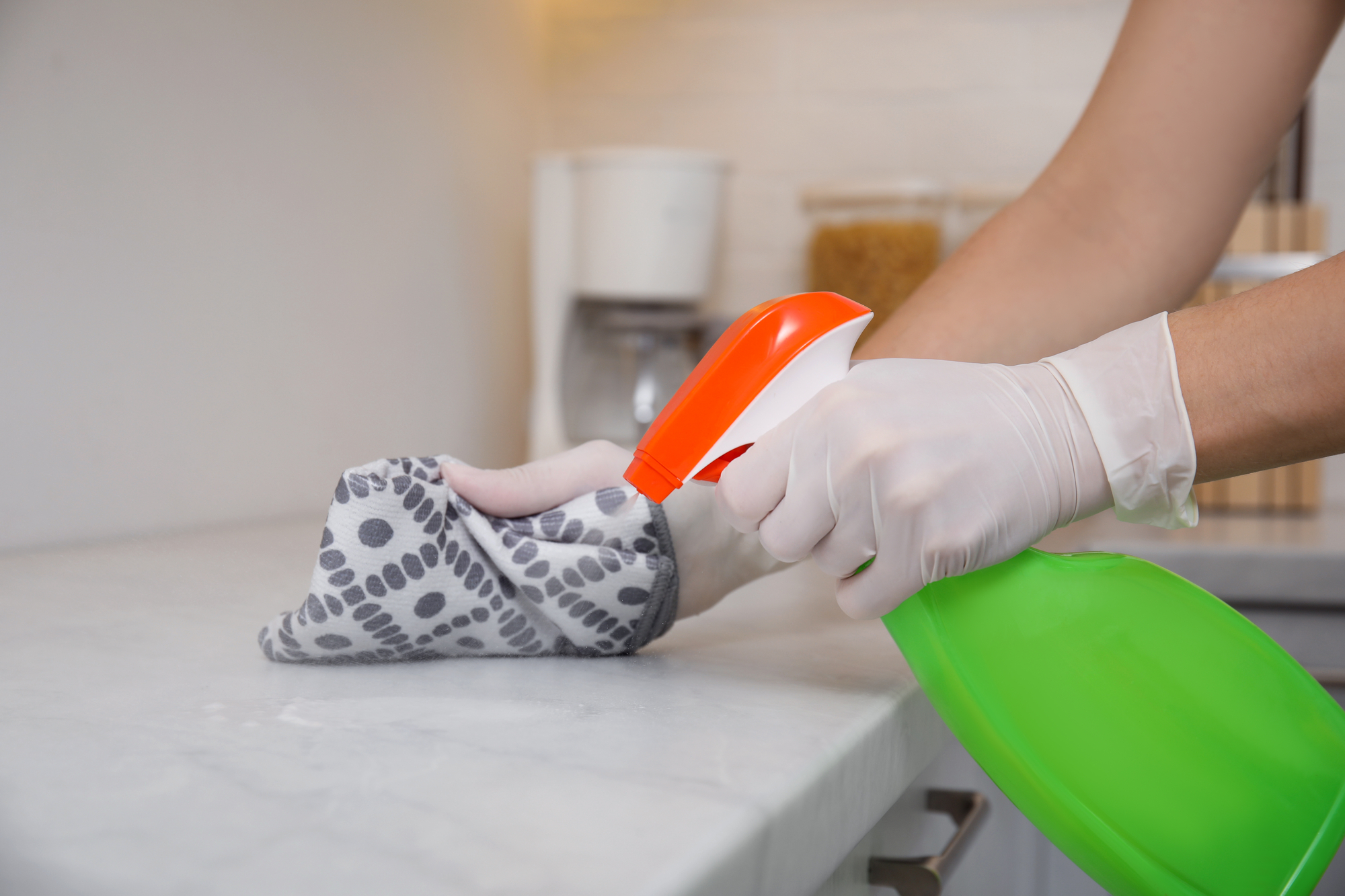Your cart is currently empty!
Granite Maintenance 101: Common Problems and Solutions
Published
Categories

Granite countertops are a common choice for bathrooms and kitchens for a reason. It is a highly durable product, which means that it requires very little maintenance, and it also lasts a long time. Unlike other stone surfaces, granite takes a few steps to preserve its appearance. Although it requires little maintenance, that doesn’t mean that it requires no maintenance. These are common problems and solutions to address them.
Staining
Granite is porous and although it is highly durable, that doesn’t mean that it doesn’t sometimes absorb liquids that can lead to staining. Coffee, wine, oil, and acidic substances that are left to sit, might result in staining. It is important to clean up spills quickly using just a mixture of mild dish soap and water. After thoroughly washing the countertop, dry it with a soft cloth. For more stubborn stains, you can use baking soda and water or purchase a commercial stone cleaner. Apply the cleanser or baking soda mixture to the affected area and allow it to sit overnight before you wash, rinse, and dry it.
Scratches
Granite is more resistant to scratches than other materials like marble, but it can be scratched by abrasive and sharp materials. Avoid cutting directly on top of your granite countertop and use a cutting board to protect your countertop’s surface. If you do have minor scratches, they can be buffed out using fine-grit sandpaper or a diamond polishing pad. Deeper scratches might require a professional repair, which is why prevention is the best option.
Etching
When acidic substances such as tomato sauce, vinegar, or lemon juice are left to sit, they can react with the calcium carbonate in granite. That can lead to dull spots or marks on the surface of the countertop. Avoid placing acidic foods directly on top of granite countertops. Always use coasters or mats to protect the surface. If you do have a spill, clean it up immediately, and never use acidic or abrasive cleaners. They can exacerbate the look of etching. For minor etching patterns, polish the affected area with a fine-grit diamond pad. If the etching is noticeable or deep enough, it might require a professional repair.
Water Rings and Cloudiness
Water rings or cloudiness can occur on granite countertops due to hard water deposits or if it is improperly cleaned or cared for. If you do see water rings, use a soft cloth and a pH-neutral cleaner and wipe the countertop regularly. Always avoid hard chemicals and abrasive cleaners. After washing, dry the surface completely to reduce the risk of water spots. For stubborn water rings, buff the area with a polishing compound.
Sealing Issues
As the granite ages, the sealant applied to granite countertops can begin to wear off. When that happens, it can predispose the granite to stain and absorb moisture. Reapply a high-quality penetrating sealer to your countertops every one to two years. Make sure to test the effectiveness of the sealer you choose by pouring water over the countertop and ensuring that the water beads. If the water absorbs instead, then you probably need to give it another coat or switch products.
Granite is a low-maintenance natural stone that makes the perfect material for your kitchen and bathroom countertops. Although it is low maintenance, that doesn’t, however, mean that it requires no maintenance. Prevention is always the cheapest solution to your home improvement woes, and granite is no different. If you have stains or etching that you can’t get out on your own, contact us today. We handle granite and marble repair and restoration problems to preserve the look of your natural stone materials.